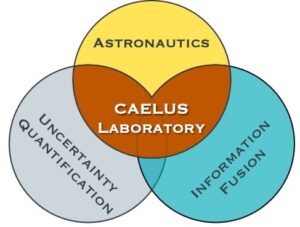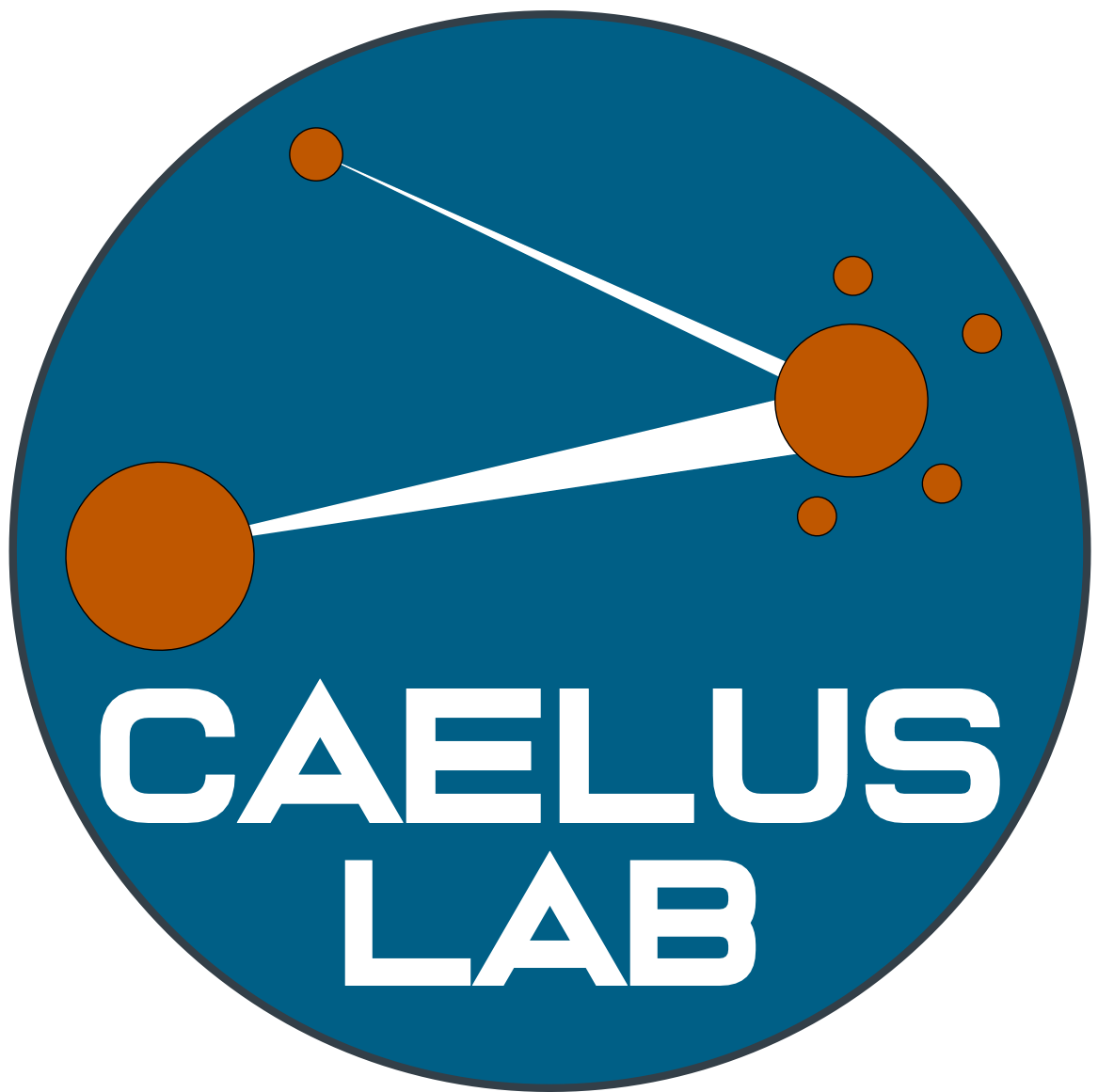 The CAELUS Laboratory specializes in research at the intersection of astronautics, uncertainty quantification, and information fusion. Through this combination of expertise, we are solving current and future problems in space domain awareness and satellite navigation. While not a current focus on the research group, previous work used our advanced methods of uncertainty quantification to produce robust and/or reliable trajectory design methods. Current work is primarily funded by the Department of Defense and NASA. Techniques developed in our research have been used by NASA for conjunction assessment and commercial companies for sensor tasking and space domain awareness.
The CAELUS Laboratory specializes in research at the intersection of astronautics, uncertainty quantification, and information fusion. Through this combination of expertise, we are solving current and future problems in space domain awareness and satellite navigation. While not a current focus on the research group, previous work used our advanced methods of uncertainty quantification to produce robust and/or reliable trajectory design methods. Current work is primarily funded by the Department of Defense and NASA. Techniques developed in our research have been used by NASA for conjunction assessment and commercial companies for sensor tasking and space domain awareness.
The graphic below illustrates the fundamental research we do (columns) and the application areas (rows). The burnt-orange bubbles indicate the general areas/topics where we have or are conducting research. Overlap of the bubbles with columns/rows is intentional to indicate the combination of fundamental research areas to address a specific topic.

Dr. Brandon A. Jones
Dr. Jones’s research interests are primarily in astrodynamics, particularly detection, tracking, identification, and characterization of orbital debris. Recent work leverages Bayesian multi-target filtering to account for ambiguities in data association for thousands of targets and to enable optimal scheduling of cooperative and non-cooperative sensors. In addition to work in space situational awareness, Dr. Jones is also developing tractable methods for mission design under uncertainty for satellites in highly perturbed environments.
Dr. Jones joined the department in the spring of 2016 and his current research focuses on improving space domain awareness, spacecraft navigation, and uncertainty quantification for spacecraft missions in highly perturbed environments. Before moving to UT-Austin, he was a Research Assistant Professor at the University of Colorado Boulder, where he also received his PhD. Prior to starting his graduate studies, he was a contractor at the NASA Johnson Space Center and received undergraduate degrees in mathematics and physics from UT-Austin.
Some information on our publications may be found here or at Google Scholar.

